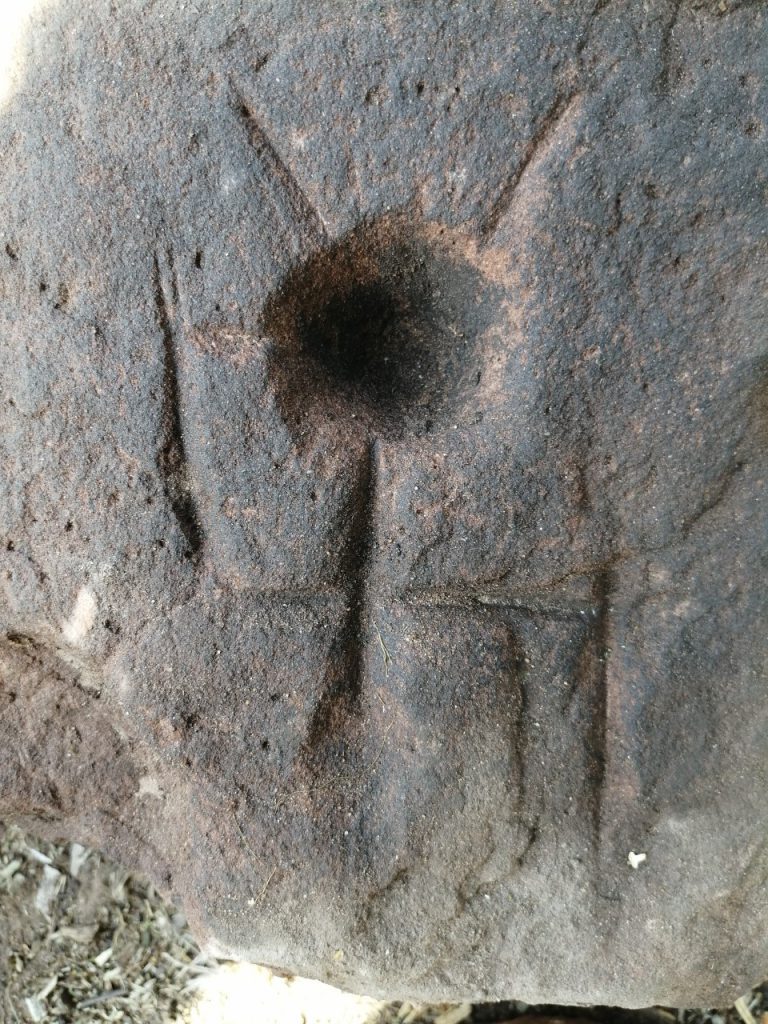Ancient history is full of people doing weird stuff, which is good news for archaeologists on the hunt for interesting artifacts or the leftovers of strange archaic rituals. Every now and then, though, researchers dig something up that leaves them utterly bamboozled, as appears to be the case for a team of scientists in England.
While excavating a site called Nesscliffe Hill last summer, the researchers came across an unusual figure carved into a red sandstone. Having dubbed their find the Nessglyph, the team are now asking the public for suggestions as to what it might represent.
Consisting of a hollowed-out circle and a few straight lines, the etching seems to have been created using some sort of metal instrument, although the archaeologists who discovered the relic have no idea who made it or why. All that is currently known is that Nesscliffe Hill was once the site of an Iron Age hillfort and was later occupied by the Romans.
The mysterious Nessglyph. Image credit: Shropshire Council
“The circular cup shape and the straight lines are indicative of two different types of technology, grinding and carving,” explained Dr Paul Reilly from the University of Southampton in a statement. After returning to the site to resume excavations that started in 2019, Reilly and his colleague Dr Gary Lock from the University of Oxford came across the glyph in a ditch that had originally been explored in the 1950s and later backfilled.
“We can speculate that the Nessglyph is figurative, with the cupmark being the head,” said Reilly. “It has two long horns and two small horns, a central body line and two arms, one held up and the other down, the upward one showing a possible hand holding a pipe or a weapon.”
However, since launching an appeal for suggestions, the team have been inundated with alternative interpretations from people all over the world. Speaking to the BBC, Reilly revealed that “people have suggested that we need to rotate the stone and it could represent a pregnant woman, others have suggested the character is holding a weapon, others, a tool of some description, and even that it may be an archer.”
“It is also worth noting that Nesscliffe lies within the putative territory of the Cornovii, a name that has been suggested to reference to the ‘horned ones’. There is the possibility of a connection to a horned deity cult in the Roman army as depicted at several military sites across Britain,” he said.
With the riddle still unsolved, the archaeologists encourage anyone with information, knowledge, or even just a hunch as to what the Nessglyph might represent to get in touch.
If you think you’ve cracked the mystery then send your thoughts to Paul Reilly at p.reilly@soton.ac.uk or Gary Lock at gary.lock@arch.ox.ac.uk.
Source Link: Archaeologists Have No Idea What This Weird Glyph Is And Want Your Help
